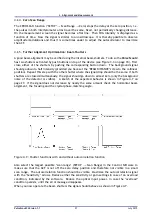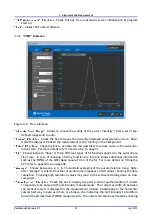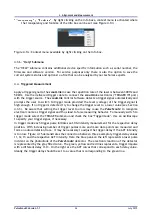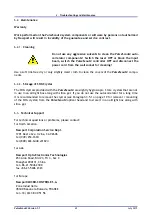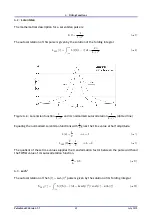
5.
Additional Hints
5.
Additional Hints
5.1.
"Zero" Scan
In "Zero" scan range the delay drive is stopped at the zero position. The measurement window
displays the measured intensity at the zero position as a function of time and behaves similar to
an oscilloscope.
5.2.
Low Pass Filter
The switchable lter suppresses high frequency signal components. This is useful in two cases:
1. If the autocorrelation signal is noisy the lter cleans up the signal and increases the Signal-
to-noise ratio.
2. If measuring in collinear mode the autocorrelation function is modulated with a fringe pat-
tern. The lter suppresses this modulation. (This is not the case in triggered mode. In
triggered mode go to slightly non-collinear con guration.) A comparison of collinear ACF
with the lter switched on and off is pictured in Figure 5.1. Also note that the lter is
automatically switched off in triggered measurement mode.
Figure 5.1.: Collinear ACF measurement with lter OFF (left) and lter ON (right)
5.3.
Change of Wavelength Range (Crystal and Detector Exchange)
The wavelength range that the autocorrelator can be used for depends on the phase-matching
angle of the crystal (crystal type and cut angle), and on the wavelength range of the detector. The
detector has to be insensitive to the fundamental wavelength of the laser and highly sensitive to
the SHG signal. Therefore the useful range for the detector is necessarily smaller than one octave
and is determined by the detector itself and a block lter. Accordingly, the detector unit including
a lter as well as the crystal (which together constitute a detector module) has to be exchanged
when another wavelength range is required. Refer to Paragraphs 3.5.1 on page 19 and 3.5.2 on
page 20, respectively, for directions on exchange of these components.
Pulse
Scout2 Version 1.1
41
July 2015

